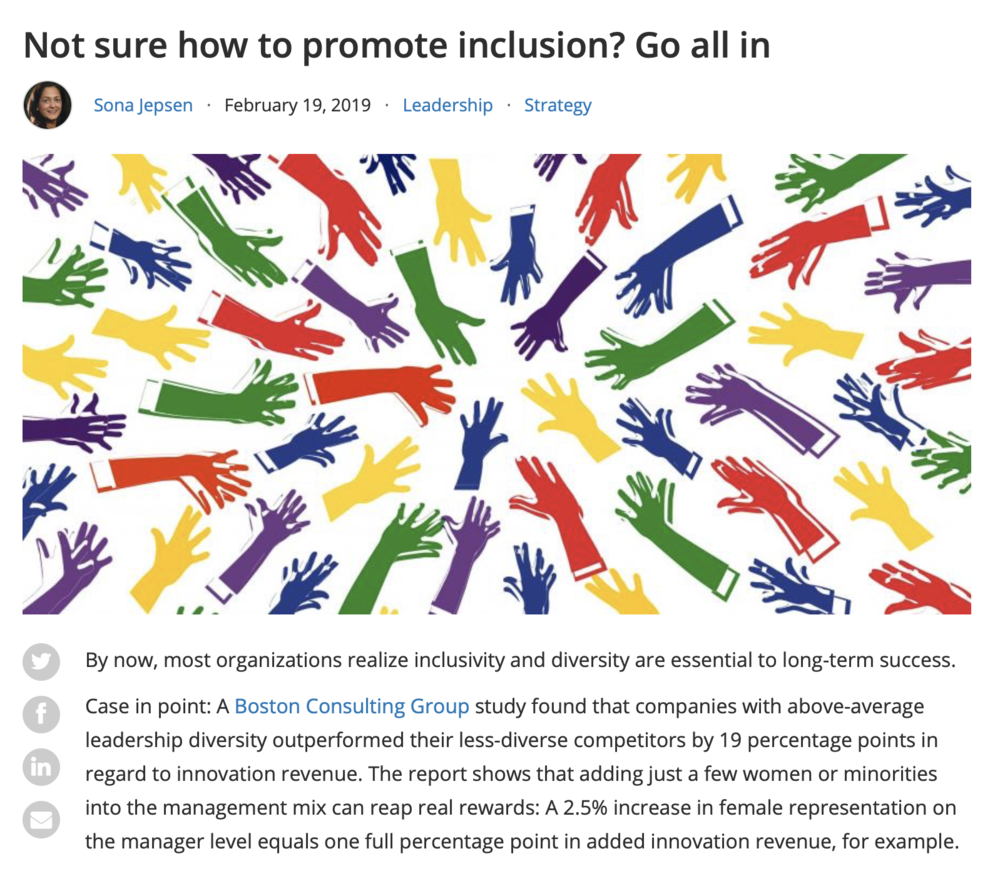


Common mistake #1: increasing diversity means you’re increasing inclusion.
Common mistake #2: Diversity & Inclusion are kind of the same thing
This article sets the record straight:
”True inclusion must take into consideration context to determine whether it is successful. For instance, the Harvard Business Review looked
at the failed attempts of big corporations to improve inclusion. They
could prove they had hired a certain number of employees from particular
backgrounds, but they weren’t necessarily allowing those workers to
participate fully. In fact, a “filling the seats” diversity focus often
led to increased bias and related behaviors among colleagues. Though
they looked diverse on paper, they acted quite the opposite.”
From my experience, this is a natural outcome of focusing on content
(diversity numbers) and ignoring context (inclusiveness). Some bean
counters think that if the ratios look right, then the problem is
solved. Wrong. It takes both. I like to say that diversifying is the
science and becoming more inclusive is the art.
How do you recruit, hire and then welcome people? Does your organization have a set of values around respect and inclusiveness that everyone knows? Are those values linked to behaviors and are your performance evaluations for reward and advancement aligned with them?
Remember, it’s not about the numbers, it’s about the inclusiveness. And studies are showing that the more inclusive a workplace is, the more innovative it is, too. As Steve Robbins says in our program, Inclusion Insights, “Diversity has been about counting people. Inclusion is about making people count.”